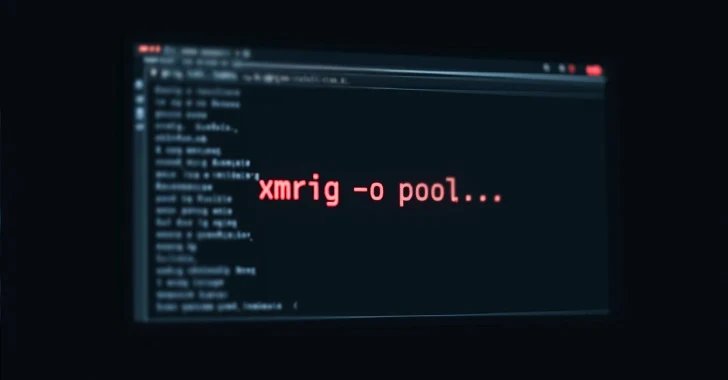Essential Insights
-
Introduction of Chaos RAT: A new remote access trojan (RAT), Chaos RAT, targets both Windows and Linux systems, being distributed through deceptive downloads masquerading as network troubleshooting utilities.
-
Functionality: Chaos RAT, an open-source tool written in Golang, allows attackers to perform various actions on compromised machines, such as file manipulation, system information gathering, and executing commands once it connects to an external server.
-
Recent Trends: Recent campaigns have linked Chaos RAT to cryptocurrency mining, with malware often delivered through phishing tactics that modify system tasks for persistent access.
- Vulnerabilities and Attribution Challenges: The administrative panel of Chaos RAT was found to have vulnerabilities that could allow for command injection, complicating detection and attribution due to the tool’s open-source nature being exploited by various threat actors.
Problem Explained
Recent investigations by security researchers have unveiled a burgeoning threat in the form of a remote access trojan (RAT) known as Chaos RAT, which has successfully infiltrated both Windows and Linux systems. The malware, initially overlooked, gained notoriety when it was linked to attacks aimed at public-facing web applications utilizing Linux, particularly accompanying the deployment of XMRig cryptocurrency miners. Chaos RAT is not a product of clandestine operations but rather an open-source tool written in Golang, which enables threat actors to build customized payloads and remotely control compromised machines. Distributed primarily through phishing schemes that disguise the trojan as a benign network troubleshooting utility, Chaos RAT has evolved significantly since its inception in 2017, with its latest iteration, version 5.0.3, surfacing in May 2024.
Acronis, a cybersecurity firm, reported that this malware boasts sophisticated capabilities, including the ability to execute reverse shells, manipulate files, and even capture screenshots of infected devices. The analysis has revealed several concerning vulnerabilities within its administrative panel, which could facilitate further exploitation. While the exact perpetrators remain unidentified, experts emphasize the growing trend of cybercriminals leveraging open-source resources for malicious purposes, which obfuscates the attribution of such attacks. Concurrently, new campaigns targeting Trust Wallet users have emerged, further exemplifying the diverse tactics employed by cyber adversaries to exploit unsuspecting individuals and compromise their digital assets.
Critical Concerns
The emergence of the Chaos RAT, a sophisticated remote access trojan capable of infiltrating both Windows and Linux systems, poses significant risks not only to individual users but also to businesses and organizations across sectors. As this malware leverages social engineering tactics to masquerade as legitimate software, its prevalence can catalyze widespread breaches and undermine trust in digital ecosystems. The potential compromise of sensitive data, unauthorized access to critical infrastructure, and the facilitation of cryptocurrency mining operations indicate severe financial repercussions and operational disruptions. If organizations find themselves ensnared in a Chaos RAT attack, the ripple effects can harm partnerships, diminish consumer confidence, and invite costly regulatory scrutiny, forcing businesses to allocate substantial resources towards incident recovery and security fortification. Consequently, the pervasive threat posed by this malware necessitates vigilant cybersecurity measures and robust user awareness initiatives to mitigate its destabilizing impact on the broader business landscape.
Possible Action Plan
In an age where cyber threats evolve rapidly, timely remediation of malware, such as Chaos RAT, is paramount for safeguarding systems against pervasive vulnerabilities.
Mitigation and Remediation Steps
- User Education: Train users to recognize suspicious downloads.
- Antivirus Solutions: Deploy comprehensive antivirus and anti-malware tools.
- Network Monitoring: Implement continuous network traffic analysis.
- Patch Management: Regularly update software and operating systems.
- Access Controls: Enforce strict user permissions and access levels.
- Incident Response Plans: Develop and regularly test incident response protocols.
- Sandboxing Applications: Execute potentially harmful applications in a controlled environment.
- Regular Backups: Maintain updated backups to mitigate data loss.
NIST CSF Guidance
The NIST Cybersecurity Framework emphasizes a proactive approach to managing risks associated with threats like Chaos RAT. Specifically, it advocates for the Identify, Protect, Detect, Respond, and Recover functions. For in-depth guidance, refer to NIST Special Publication 800-53, which details security and privacy controls applicable to organizational systems.
Advance Your Cyber Knowledge
Discover cutting-edge developments in Emerging Tech and industry Insights.
Understand foundational security frameworks via NIST CSF on Wikipedia.
Disclaimer: The information provided may not always be accurate or up to date. Please do your own research, as the cybersecurity landscape evolves rapidly. Intended for secondary references purposes only.
Cyberattacks-V1

